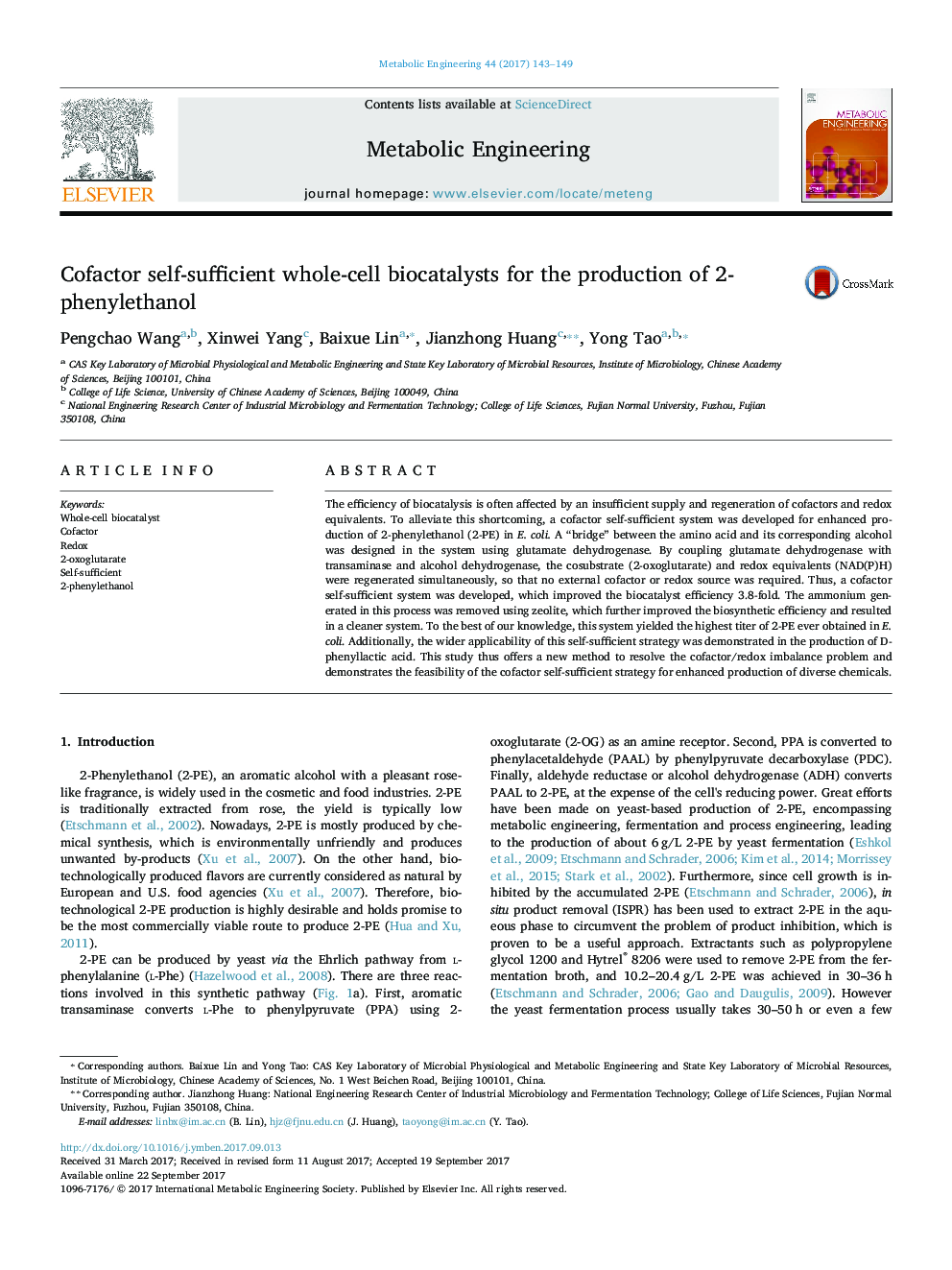| Article ID | Journal | Published Year | Pages | File Type |
|---|---|---|---|---|
| 6452646 | Metabolic Engineering | 2017 | 7 Pages |
â¢A cofactor self-sufficient system was designed by a “bridge” between the amino acid and its corresponding alcohol.â¢By borrowing hydrogen from glutamate dehydrogenase reaction for reduction of the final step of 2-PE synthesis, a cofactor self-sufficient system was developed.â¢Zeolite was utilized to remove the only waste ammonia and in situ product removal technology was applied to alleviate inhibition and toxicity of product. Thus a green and efficient whole-cell biocatalysis process was developed.â¢This study offers a new method to resolve the cofactor/redox imbalance problem.
The efficiency of biocatalysis is often affected by an insufficient supply and regeneration of cofactors and redox equivalents. To alleviate this shortcoming, a cofactor self-sufficient system was developed for enhanced production of 2-phenylethanol (2-PE) in E. coli. A “bridge” between the amino acid and its corresponding alcohol was designed in the system using glutamate dehydrogenase. By coupling glutamate dehydrogenase with transaminase and alcohol dehydrogenase, the cosubstrate (2-oxoglutarate) and redox equivalents (NAD(P)H) were regenerated simultaneously, so that no external cofactor or redox source was required. Thus, a cofactor self-sufficient system was developed, which improved the biocatalyst efficiency 3.8-fold. The ammonium generated in this process was removed using zeolite, which further improved the biosynthetic efficiency and resulted in a cleaner system. To the best of our knowledge, this system yielded the highest titer of 2-PE ever obtained in E. coli. Additionally, the wider applicability of this self-sufficient strategy was demonstrated in the production of D-phenyllactic acid. This study thus offers a new method to resolve the cofactor/redox imbalance problem and demonstrates the feasibility of the cofactor self-sufficient strategy for enhanced production of diverse chemicals.
